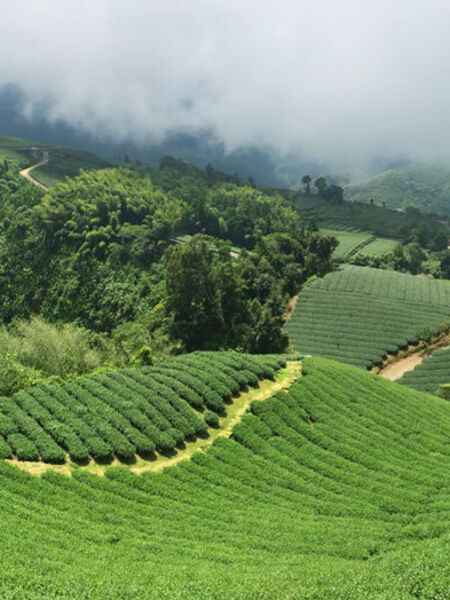Everything You Need to Know About New Taipei Teas

As you may know- I’ve been doing a running series here on the tea muse blog highlighting Taiwan and the areas within it that we currently stock teas from. I'll be finishing that series off today with the last of the areas we currently stock tea from.
General
This time around it’s New Taipei. New Taipei (新北市 Xīnběi Shì), while officially a city, is more like a region surrounding the cities of Taipei and Keelung in Northern Taiwan. Because of that it is considered to be a part of the Taipei Metropolitan Area. The New Taipei City government has over time established museums of tea culture, pottery and ceramics and other sites to help preserve the memory of the common history and culture.
Tea has been grown in New Taipei for around 200 years and the tea growing districts in this area include Shiding, Wulai, and Hshintien, but Pinglin town is considered the "tea capital" of Wenshan. This region is most famous for producing some of the world's finest Pouchong.
The Pinglin Tea Museum
One of the museums established by the government in this area is The Pinglin Tea Museum which is located in the southeastern corner of New Taipei City. It is a designated protected area located upstream of Fei-Cui Reservoir and it is one of the world's largest tea museums.The region is home to some of the earliest tea plantations in Taiwan and is also the main tea growing area for Wenshan Baozhong / Pouchong Tea, the production and sale of which has become the most important economic resource in Pinglin District. More than 80% of the local residents grow tea and the total area of tea plantations is close to 1000 acres.
The museum's main goals among other things are to provide an immersive learning environment for tea arts, drawing upon several thousand years of accumulated knowledge and worldwide appeal of the second most popular beverage and to help people better understand tea industry, culture and drinking, making sure that the local tea growers are involved in addressing international markets and boosting the local economy.
Try Tea from New Taipei
The Master's tea currently in stock from this area of Taiwan is Wen Shan Pouchong.
It is grown in the Pinglin District of Taiwan and is a very lightly oxidized oolong renowned for its rather heavenly floral aroma and taste. This tea gets its terroir from the beauty of the natural, slightly wild, environment of the area. Light bodied, it offers notes of lilac, gardenia and soft hints of vanilla in early infusions. Later infusions reveal notes of sweet clover, lily-of-the-valley, and river rock minerals. An early spring harvest, its character lingers for many infusions due to the freshness of the leaves and quality of craftsmanship.
Wen Shan is grown by tea farmer Su Wen-Song, who has been growing tea for over 40 years and his family have been planting Baozhong / Pouchong for over 150 years and he aims to keep that tradition going for as long as possible. His typical day consists of walking into the tea garden to check on the growth of the leaves and on the water system to make sure everything is working. If the tea leaf is ready to pick up, he will organize workers to pick them.
In the afternoon, he then goes back to the garden for a final check and does any extra weeding. His favorite part of the process is the fermentation because it is such an important part of the Baozhong / Pouchong process and this specific element of the process is what sets this tea apart from other oolong types.
Because of this processing, Baozhong / Pouchong requires more attention and control. If you are too forceful in the rolling steps then the pouchong tea will fail in the end, and that floral element will not be brought out. While this is his favorite part of the process because it makes the tea what it is, he also says that this is what he views as the hardest part of the process because even if it is slightly off it can ruin whole batches of tea and in turn huge losses in income.
The number one tip he gives to people when asked about preparing his tea is to make sure they are using the right temperature water, this will ensure you are trying this tea at its best and that you are enabling yourself to take in every aspect of its flavor and aroma profile. We recommend that you prepare this tea Gongfu Cha style for the best overall results and a higher overall number of steeps. But you can also prepare this western style if that is more your cup of tea. It will last around three steeps when prepared this way.
I’ve loved putting this series together for you all and shining a spotlight on Taiwan and the tea produced there. For now this will be the last post for this series as we’ve now covered all of the regions we stock teas from. I hope that this series has helped you learn something new and that you’ll go forward on your tea journey to try more tea from Taiwan and if you do ever visit any of the places mentioned throughout the series, be sure to tag us in your pictures or videos @adagioteas on both Instagram & Tik Tok.
